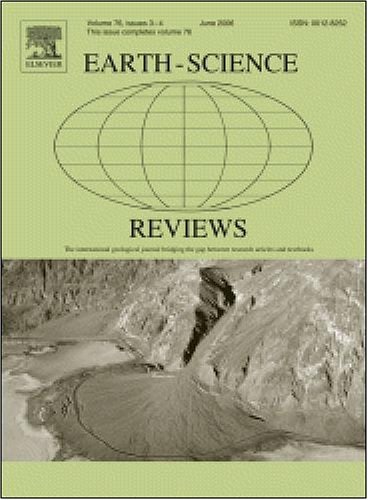Ice-marginal terrestrial landsystems: Sediment heterogeneity, architecture and hydrogeological implications
IF 10.8
1区 地球科学
Q1 GEOSCIENCES, MULTIDISCIPLINARY
引用次数: 0
Abstract
Previously glaciated landscapes often present unique challenges for hydrogeological investigations. Specifically, ice-marginal terrestrial landsystems are often difficult to characterize and model considering the dynamic nature of the ice and associated meltwater and sediment gravity flow processes that result in heterogeneous sediment successions and architectures over a range of scales. This paper integrates the many advances in our understanding of glacial geology with a focus on its hydrogeological implications. Ice-marginal terrestrial landsystems can be conceptualized as complex arrangements of glacial conditions that vary as the ice margin stagnates or fluctuates over time. Subglacial, englacial, proglacial, glaciofluvial, glaciolacustrine and gravitational or glacitectonic deformation processes lead to erosional and depositional elements that stack over time to form complex subsurface successions with uncertain lateral variability. The geomorphology and sediments at surface within an area are the last expression of those erosional and depositional elements over time. The nature and architecture of sediment types expected in eight different settings are reviewed and their hydrogeological significance discussed. The evolution of a contaminated site's conceptual model is then used to demonstrate how detailed sedimentological and stratigraphic characterization of glacial successions together with an understanding of ice-marginal landsystems, can lead to a more robust site conceptual model of hydraulic conductivity architecture that can better constrain hydrogeological investigations.
冰缘陆地系统:沉积物非均质性、结构和水文地质意义
以前的冰川景观通常对水文地质调查提出了独特的挑战。具体来说,考虑到冰和相关的融水和沉积物重力流过程的动态性质,冰边缘陆地系统往往难以表征和建模,这些过程会导致一系列尺度上的非均匀沉积物序列和结构。本文综合了我们对冰川地质学的理解的许多进展,重点介绍了其水文地质意义。冰缘陆地陆地系统可以被概念化为冰川条件的复杂安排,这些条件随着冰缘的停滞或波动而变化。冰下、冰川期、前冰川期、冰川河、冰湖和重力或冰川构造变形过程导致侵蚀和沉积元素随时间叠加,形成复杂的地下序列,具有不确定的横向变异性。一个地区的地表地貌和沉积物是这些侵蚀和沉积因素随时间变化的最后表现。综述了8种不同环境下沉积物类型的性质和结构,并讨论了它们的水文地质意义。然后使用污染场地概念模型的演变来展示冰川演替的详细沉积学和地层学特征,以及对冰边缘陆地系统的理解,如何导致更强大的水力传导结构场地概念模型,从而更好地约束水文地质调查。
本文章由计算机程序翻译,如有差异,请以英文原文为准。
求助全文
约1分钟内获得全文
求助全文
来源期刊

Earth-Science Reviews
地学-地球科学综合
CiteScore
21.70
自引率
5.80%
发文量
294
审稿时长
15.1 weeks
期刊介绍:
Covering a much wider field than the usual specialist journals, Earth Science Reviews publishes review articles dealing with all aspects of Earth Sciences, and is an important vehicle for allowing readers to see their particular interest related to the Earth Sciences as a whole.
 求助内容:
求助内容: 应助结果提醒方式:
应助结果提醒方式:


